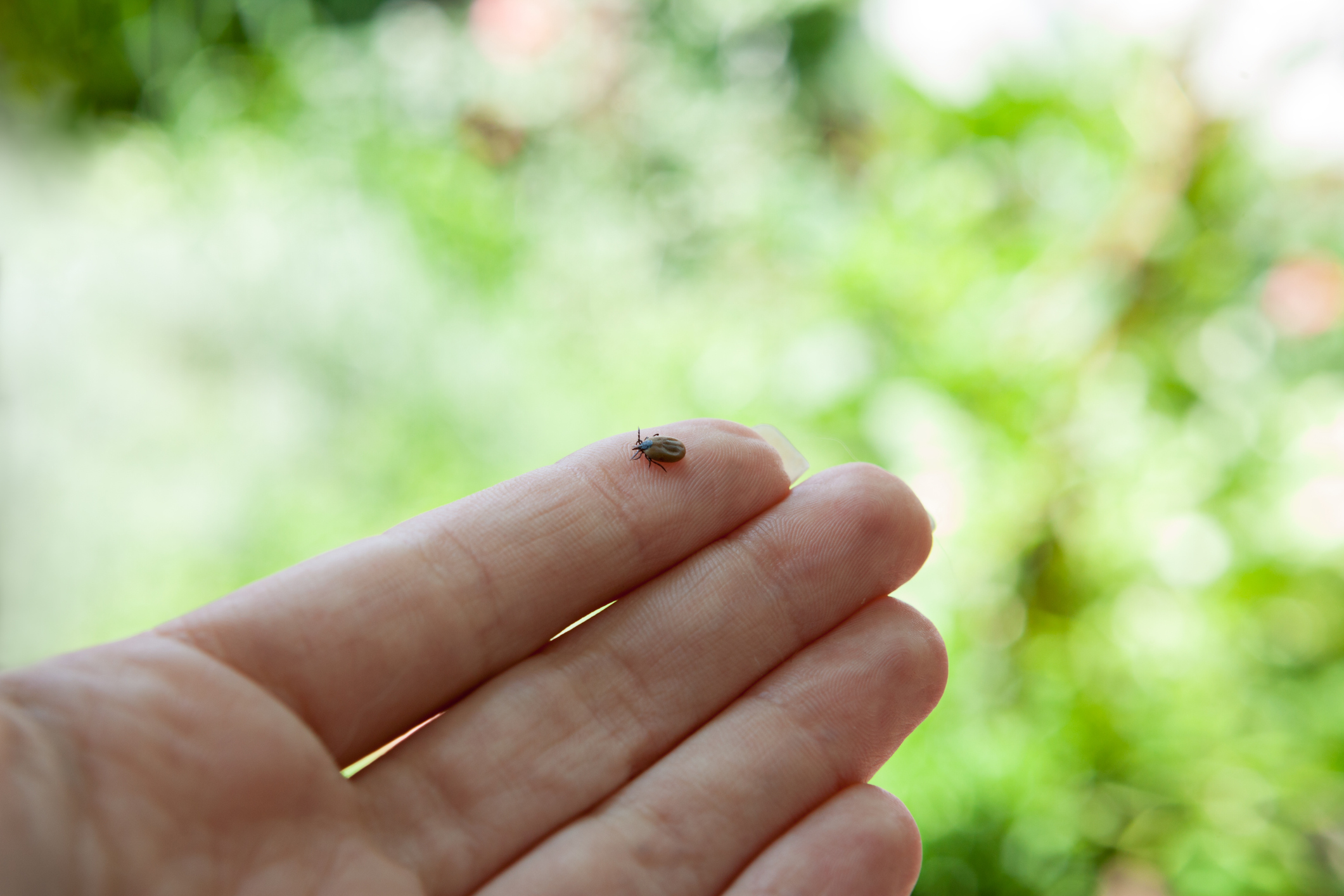

One of my favorite things to do in the summer is go camping. But since I live in the state where Lyme disease began, I’m hyper-aware of one of the hazards of spending time outdoors: ticks.
I’ve learned it helps to wear long sleeves, pants tucked into socks and a hat. But there’s still the chance a tick may latch onto you. They’re so tiny they’re easy to miss — that is, until they’ve swollen up after feasting on your blood.
So, what happens if I am bitten? Should I call the doctor right away? Here’s what we all need to know about ticks and tick bites…
Speedy tick removal is key
First off, experts say, most common infections from tick bites aren’t transmitted immediately. Take Lyme disease, which is by far the most common tickborne disease in the U.S. The bacteria that causes it, Borrelia burgdorferi, takes more than 24 hours to be transmitted from tick to host, Dr. Jonathan Oliver, a public health entomologist at the University of Minnesota, told MedPage Today.
This is because the Borrelia bacteria lives in the mid-gut of the tick and has to be activated by the tick taking in blood. Only then can the bacteria migrate to the salivary glands and be transmitted to the host.
Lyme disease symptoms include fever, headache, fatigue and the signature bulls-eye rash that can appear anywhere from three to 30 days after a bite. If not treated, it can spread to the heart, joints and nervous system. But you can reduce your risk of getting sick very quickly…
“If you do tick checks every day and make sure you remove any attached ticks, your risk of Lyme disease is very low, even if the tick was infected,” Oliver says.
The best way to do that is by using fine-tipped tweezers to grasp the tick as close to the skin’s surface as possible and pull it upward with steady pressure. If parts of the tick are left in the skin, remove that with tweezers as well and clean the area and your hands with rubbing alcohol. Flush the tick down the toilet.
Disease-causing ticks to watch for
Experts agree that there is no need to seek medical treatment after most tick bites, particularly when the tick is removed right away.
But before you remove it, take a picture. It’s important to identify it (there are several smartphone apps to make this easy as well as sites online), especially if it’s one of these three ticks most likely to transmit disease to humans:
- The blacklegged tick, also known as the deer tick
- The lone star tick
- The American dog tick
In addition to Borrelia burgdorferi, the blacklegged tick can transmit the bacteria Anaplasma phagocytophilum, which causes anaplasmosis, and the protozoan Babesia microti, which causes babesiosis.
Both these illnesses can cause flu-like symptoms. However, because the Babesia protozoan infects the red blood cells, it can lead to a more serious condition known as hemolytic anemia. Babesiosis can be life-threatening in the elderly and in people who have had their spleen removed, have a weakened immune system or have other serious health conditions such as liver or kidney disease.
The blacklegged tick can also transmit Powassan virus. Oliver told MedPage Today this virus is “pretty rare but can be very bad. It can cause encephalitis and meningitis and can be lethal.”
Both the blacklegged tick and the lone star tick can transmit the bacteria Ehrlichia. This causes ehrlichiosis, an illness characterized by flu-like symptoms. Both of these ticks also can trigger something known as alpha-gal syndrome (AGS), which causes people to have an allergic reaction to all red meat.
In addition, the lone star tick can transmit Bourbon virus and Heartland virus. According to Oliver, both these diseases are “extremely rare as far as we know, but they can cause encephalitis-type symptoms.”
The American dog tick can transmit Rickettsia rickettsia. This bacteria causes one of the deadliest tickborne diseases in the Americas: Rocky Mountain spotted fever (RMSF). People with RMSF usually have a fever and headache at first. Then about two to four days after fever begins, they develop a rash that appears as small, flat, pink, macules on the wrists, forearms, and ankles and spreads to the trunk and sometimes the palms of hands and soles of feet.
Seek treatment as soon as possible for RMSF or it can result in death or cause permanent damage to blood vessels in the arms, legs, fingers or toes that can result in amputation. Some patients also suffer hearing loss, paralysis or mental disability.
The good news? The proportion of American dog ticks that carry Rickettsia rickettsii is less than one percent.
Preventing tick bites
In addition to covering up well when you venture out, other common-sense ways to dodge ticks include:
- Avoiding thick vegetation.
- Hiking in the center of trails.
- Using tick repellents.
- Wearing light-colored clothes so it’s easier to see ticks on you.
- Immediately checking yourself and your pets after time outdoors.
- Showering after spending time outdoors.
- Tumbling clothes in a hot dryer after time outdoors.
Sources:
Bitten by a Tick: What’s My Risk of Getting Sick? — MedPage Today
Anaplasmosis — Centers for Disease Control and Prevention
Babesiosis FAQs — Centers for Disease Control and Prevention
Ehrlichiosis — Centers for Disease Control and Prevention
Rocky Mountain Spotted Fever (RMSF) — Centers for Disease Control and Prevention

